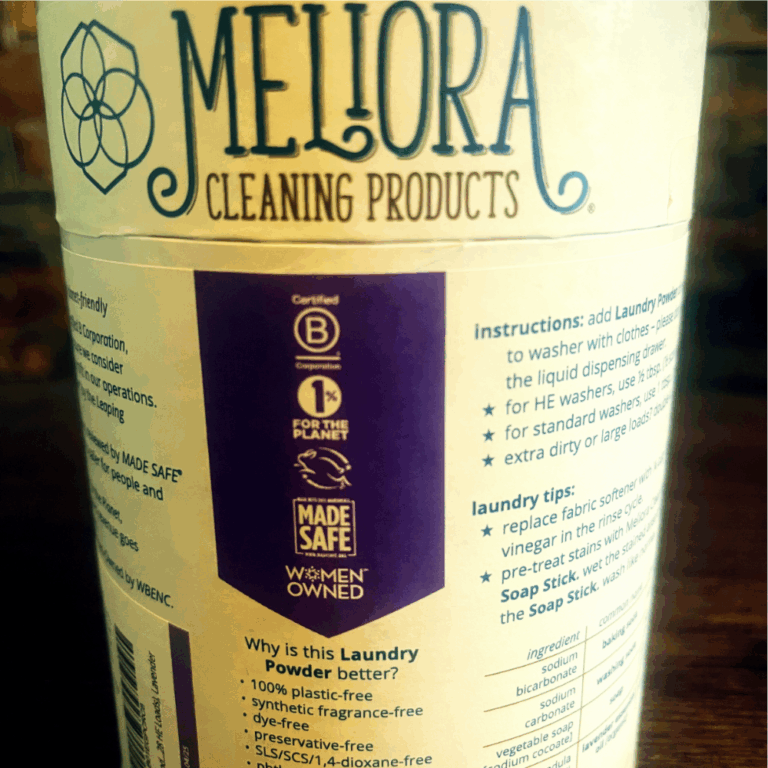Did you know that VOC levels indoors can be 2 to 5 times higher than outdoors—even in rural areas?1 That’s a pretty startling fact when you consider how much time we spend inside. VOCs, or volatile organic compounds, are invisible chemicals released by everyday household items. Over time, they can build up in the air and impact your health.
By understanding what VOCs are, where they come from, and how to reduce them, you can take simple steps to improve your home’s air quality.
What Are Volatile Organic Compounds?
Volatile organic compounds (VOCs) are carbon-based chemicals that quickly evaporate into the air at room temperature. They’re often emitted by everyday items in your home, like paints, cleaning products, or even that brand-new couch. Though invisible, these compounds can have a significant impact on indoor air quality—and over time, on your health.
Where Do Volatile Organic Compounds Come From?
VOCs can come from a surprising number of household products and materials. Here are some common sources:
- Paints and varnishes: Freshly painted walls release VOCs into the air.
- Cleaning products and air fresheners: Many of these emit chemicals while they clean or scent your home.
- Personal care items: Deodorants, hair sprays, and perfumes are often culprits.
- New furniture and carpets: Treated wood, adhesives, and fabric coatings release VOCs over time.
- Building materials: Plywood and particleboard are common offenders.
- Office equipment: Printers and copiers release VOCs when in use.
- Candles: Burning scented candles can add VOCs to your indoor air.
- Pesticides and insect repellents: These chemicals contribute to VOC levels when used indoors.
Each of these sources plays a role in adding VOCs to your home, making it important to stay mindful of what you bring into your space.
Health Effects of VOC Exposure

Short-Term Health Effects
In the short run, VOCs can trigger some pretty unpleasant symptoms. You might experience headaches, dizziness, throat irritation, or difficulty breathing. Some cleaning products and air fresheners are packed with VOCs, and coming into contact with them can lead to skin irritation.
Long-Term Health Effects
If VOC exposure sticks around for too long, it can cause more serious issues. Prolonged exposure may damage the liver, kidneys, and central nervous system, potentially affecting how your brain works. Some VOCs, like benzene and formaldehyde, are also linked to cancer, which is a pretty big reason to minimize exposure.2
Specific Symptoms
When you’re exposed to VOCs, the symptoms can vary depending on the level and duration of exposure. Some people might experience only mild discomfort, while others could face more serious reactions. Here are some key signs to look out for:
- Eye, Nose, and Throat Irritation: If you’re noticing a scratchy throat, itchy or watery eyes, or a stuffy nose, it could be a reaction to VOCs in the air. These chemicals can dry out and irritate mucous membranes, leading to discomfort.
- Headaches: VOCs are often behind those sudden, lingering headaches that seem to pop up for no apparent reason. This can be especially true in poorly ventilated spaces with new paint, furniture, or cleaning products.
- Fatigue: Feeling unusually tired or sluggish? Chronic exposure to VOCs can mess with your energy levels, leaving you feeling drained or sluggish throughout the day.
- Nausea and Vomiting: Higher concentrations of VOCs, especially from things like paints and solvents, can trigger nausea and sometimes even vomiting. This is often your body’s way of signaling that something is off.
- Skin Irritation: If your skin feels itchy, red, or inflamed after contact with certain cleaning products or cosmetics, it might be a reaction to VOCs. These chemicals can cause allergic skin reactions, especially in those with sensitive skin.
- Breathing Difficulties: Some VOCs can cause respiratory symptoms, like wheezing, coughing, or shortness of breath. People with asthma or other pre-existing conditions may notice their symptoms get worse with exposure.
- Dizziness and Lack of Coordination: Exposure to VOCs, particularly in confined spaces, can lead to dizziness, lightheadedness, or trouble maintaining balance. This is due to the way these chemicals affect the nervous system and brain.
It’s important to pay attention to these signs, especially if you notice a pattern when certain products are used or in particular areas of your home. Taking action early can help reduce the risk of more serious health problems down the road.
Vulnerable Groups
Kids, the elderly, and anyone with pre-existing respiratory issues or a weakened immune system are more at risk when it comes to VOC exposure. Kids are especially vulnerable since their bodies are still developing and they spend a lot of time indoors, breathing in whatever’s floating around. It’s even more reason to make sure your home is VOC-free for the whole family.
How Can You Manage and Reduce VOCs in Your Home?

Once you’ve identified potential VOC sources, it’s time to take action. Here’s how to start reducing VOC exposure in your home:
- Go green with cleaning: Switch to eco-friendly cleaning products or use DIY options like vinegar, baking soda, and lemon juice to cut down on VOCs from conventional cleaners.
- Open windows and doors: Fresh air can do wonders for reducing VOCs in your home.
- Increase ventilation: Use exhaust fans, especially in kitchens and bathrooms, to help expel indoor air pollutants.
- Use air purifiers: A good air purifier can help filter out VOCs and other harmful particles from the air.
How Long Do VOCs Linger After Home Improvements?
When it comes to VOCs, their duration in your home depends on factors like the type of VOC, the source, and the level of ventilation. Here’s a breakdown of how long they typically stick around:
Freshly Painted Walls and Surfaces
Fresh paint can release VOCs into your home for 2–3 days, but with good ventilation—like opening windows and using fans—you can speed up the process and clear the air faster.
Off-Gassing from New Furniture
Furniture made from treated wood or synthetic materials can off-gas for weeks. Generally, VOC levels start to drop after about a month, though some materials may take longer to fully release these chemicals.
Emissions from New Building Materials
New flooring, carpets, and cabinetry can continue emitting VOCs for a while, with the duration depending on the materials used. Proper ventilation can help reduce their presence over time.
The key to reducing VOC exposure in your home is to keep the air circulating and let fresh air in!
How Can You Test VOC Levels in Your Home?
If you’re concerned about VOCs in your living space, there are tools that can help you keep track. One handy device is the Temtop M10, which measures various pollutants like formaldehyde, TVOCs, CO2, PM2.5, temperature, and humidity. This little gadget can give you a snapshot of your indoor air quality, making it easier to see where the problem areas are.
For a more in-depth analysis—especially if you’re in the middle of a renovation or suspect high pollution levels—it might be worth bringing in a professional. They’ll use advanced lab tech to get precise data on the specific substances present and their concentration levels.
Remember to follow the instructions that come with your monitor carefully. Testing across multiple rooms will give you a more complete picture of your home’s air quality and help you pinpoint the worst offenders.
References
- U.S. Environmental Protection Agency (EPA). “Volatile Organic Compounds’ Impact on Indoor Air Quality.” Retrieved from Volatile Organic Compounds’ Impact on Indoor Air Quality | US EPA
↩︎ - U.S. Environmental Protection Agency (EPA). “Volatile Organic Compounds’ Impact on Indoor Air Quality.” Retrieved from Volatile Organic Compounds’ Impact on Indoor Air Quality | US EPA ↩︎





